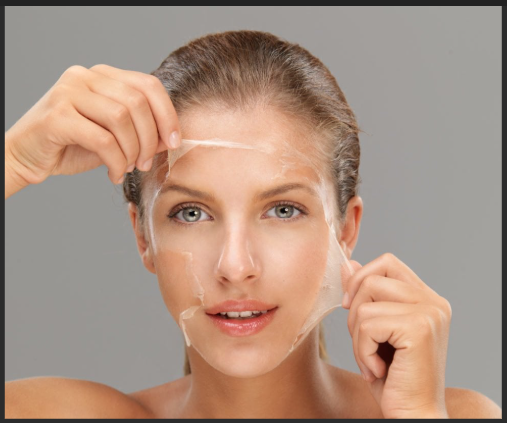Chemical peels are a dermatological treatment used to improve the texture and appearance of the skin by applying a chemical solution to exfoliate and remove the outer layers. They are commonly performed on the face but can also be applied to the neck and hands.

How Chemical Peels Work
- A chemical solution is applied to the skin, causing controlled damage to the surface.
- This process stimulates the regeneration of new, healthier skin and improves skin tone and texture.
- Depending on the type of peel, the exfoliation can be superficial, medium, or deep.
Types of Chemical Peels
- Superficial Peels:
- Use mild acids like alpha-hydroxy acids (AHAs) or beta-hydroxy acids (BHAs).
- Target the outermost layer of skin (epidermis).
- Ideal for minor skin issues like dullness, light acne, or uneven tone.
- Medium Peels:
- Use stronger acids like trichloroacetic acid (TCA).
- Penetrate the middle layers of the skin.
- Effective for treating wrinkles, acne scars, and uneven pigmentation.
- Deep Peels:
- Use potent chemicals like phenol.
- Penetrate the deeper layers of the skin.
- Best for severe wrinkles, deep scars, or significant sun damage.
- Requires longer recovery and should only be done under medical supervision.
Benefits of Chemical Peels
- Improves Skin Texture: Reduces roughness, leaving smoother skin.
- Minimizes Acne and Scars: Removes clogged pores and reduces the appearance of scars.
- Evens Skin Tone: Diminishes hyperpigmentation, sunspots, and age spots.
- Reduces Fine Lines and Wrinkles: Stimulates collagen production for a youthful appearance.
- Brightens Skin: Enhances radiance by removing dead skin cells.
Preparation for a Chemical Peel
- Consult with a plastic surgeon to choose the appropriate peel for your skin type and concerns.
- Avoid sun exposure, exfoliation, and certain skin treatments (e.g., waxing or laser treatments) before the procedure.
- Use a prescribed skincare routine to prepare your skin, if recommended.
Aftercare
- Hydration: Apply moisturizer to soothe the skin.
- Sun Protection: Use sunscreen diligently to protect the sensitive, healing skin.
- Avoid Picking: Do not peel or pick at the skin during recovery.
- Follow-Up: Use prescribed creams or ointments and attend follow-up visits as directed.
